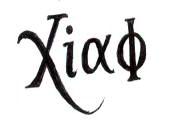Noli Me Tangere is also about our faults
by xiaochua
The Manila Times, Walking History Column
April 28, 2018
MICHAEL “XIAO” CHUA
JOSÉ Rizal wrote the Noli Me Tangere for the benefit of the indios. But it was not meant for indios to read. The mere fact that he wrote it in the Spanish language and not Tagalog tells us that he had a different audience in mind: The Spaniards and their government, so that they could grant the necessary reforms to the indios, which included representation, the granting of equal rights and the distinction of being a province.
But if Rizal was exposing the ills of Spanish colonialism in the Noli Me Tangere, then why did he want Filipinos to actually become part of Spain?
The German political scientist Manuel Sarkisyanz, the author of Rizal and Republican Spain, said that there were actually two Spains during Rizal’s time. The Spain in the Philippines, ruled by frailocracy and backwardness, and the real Spain which was ruled by republicanism and liberalism. Rizal and his contemporaries in the Propaganda Movement, who lived in Europe, apparently liked and fell in love with the idea of bringing liberal Spain to the Philippines.
According to early Rizal biographer, the American Austin Craig: “Early in his stay in Madrid, Rizal had come across a secondhand copy, in two volumes, of a French novel, which he bought to improve his knowledge of that language. It was Eugene Sue’s The Wandering Jew, that work which transformed the France of the 19th century. The book, he writes in his diary, “affected him powerfully, not to tears, but with a tremendous sympathy for the unfortunates that made him willing to risk everything in their behalf. It seemed to him that such a presentation of Philippine conditions would certainly arouse Spain, but his modesty forbade his saying that he was going to write a book like the French masterpiece.”
Some write-ups point to Harriet Beecher Stowe’s novel Uncle Tom’s Cabin—which exposed the inhumanity of slavery and which was credited with having fueled the American Civil War—as Rizal’s inspiration for the Noli Me Tangere. It was more likely the Wandering Jew, which Andres Bonifacio had also reportedly read.
Some argue that what the propagandists tried to achieve with satire is how the so-called “fake news” works today for propaganda purposes. Although I should stress that the Noli was presented as a representation of truth and not the truth, whereas disinformation is presented as reality and news. It was fictionalized history. He heard real stories and put them together in characters, caricaturing them for effect. Padre Salvi and Padre Damaso, for example, reflected the arrogance, cruelty and backwardness of the colonial system.
But some have suggested that in his portrayal of women, Rizal was a misogynist. All his women characters were undesirable: Doña Consolacion was cruel, Doña Victorina epitomized colonial mentality, Sisa was too weak she became mad, and what people think as the symbol of the Philippines and the Filipino woman, Maria Clara, was actually a weak and treacherous woman, who did not fight for her love and gave away to Padre Salvi her lover Crisostomo Ibarra’s letters to her, which were used to implicate him in a revolt. Incidentally, the only strong woman in the Noli, Elias’ lover Salome, was taken out of the novel for the sake of cost-cutting.
But this is an unfair assessment of Rizal. Could it be that even if Rizal was not writing for Filipinos per se, he was not just exposing the ills of colonialism but also giving a necessary wake-up call for Filipinos to change their bad attitude. According to Austin Craig, “…the book had now become less an effort to arouse the Spanish sense of justice than a means of education for Filipinos by pointing out their shortcomings. …misgovernment may be due quite as much to the hypocrisy, servility and undeserving character of the people as it is to the corruption, tyranny and cruelty of the rulers.”
According to Gen. José Alejandrino, in his memoir The Price of Freedom, Rizal told him that he regretted killing Elias in his novel. Ibarra, who continued on to become Simoun in the second novel, eventually failed in his plans to overthrow the Spaniards because he was “an egoist who only decided to provoke the rebellion when he was hurt in his interests, his person, his loves and all other things he held sacred.” According to Rizal, Elias should have led the revolution because he was a “noble character, patriotic, self-denying and disinterested— necessary qualities of a man who leads a revolution.”
So Noli Me Tangere was less a condemnation of our colonial masters than a warning to us Filipinos. It is also about our faults and weaknesses. We read it not just for history, but read it with the fresh eyes of the present. For Rizal once noted, “The slaves of today will be the tyrants of tomorrow.” We should ask, how much of the social cancer still exists in our very soul today?
